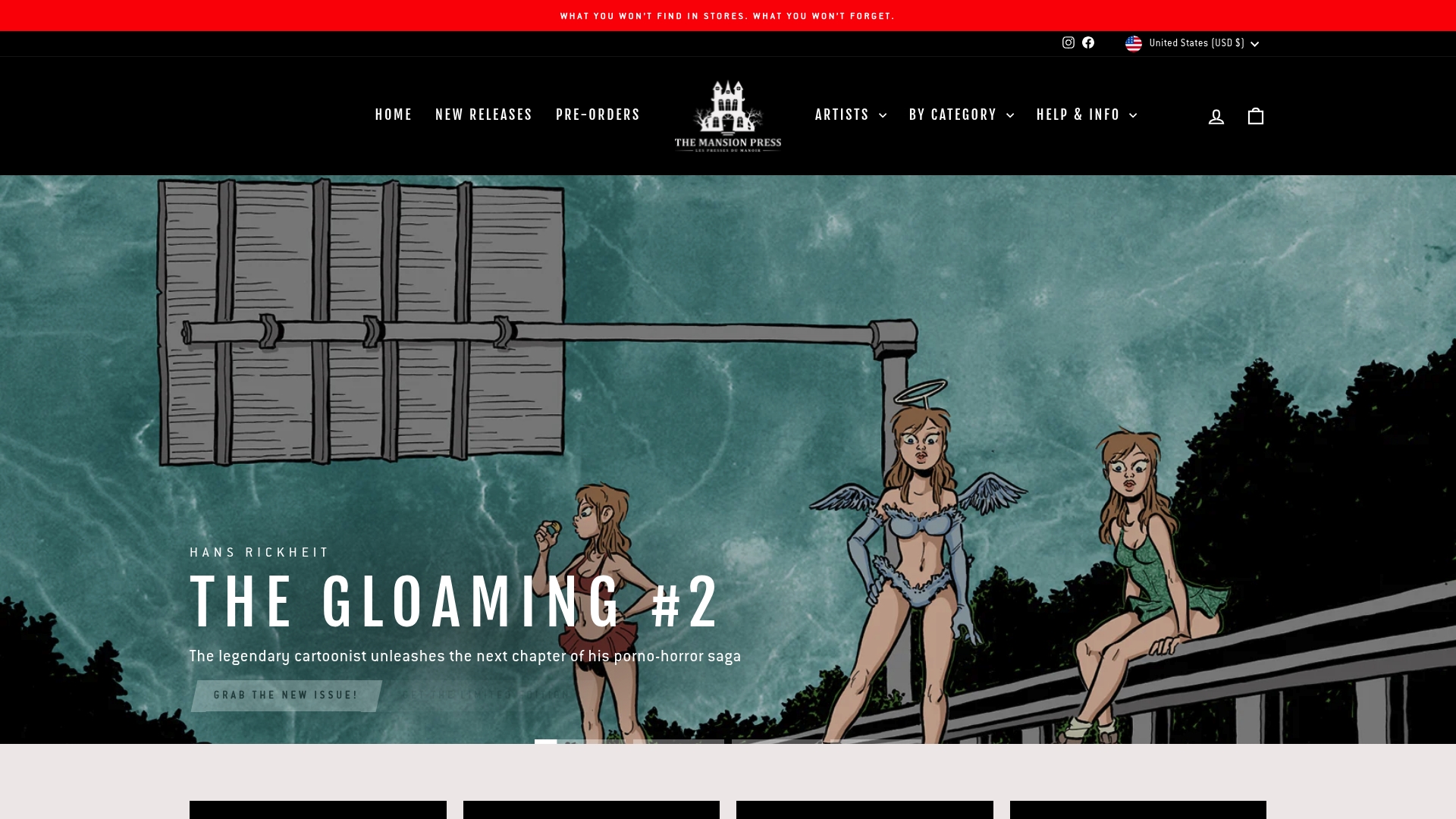Graphic Novel Genres Explained: Complete Essential Guide
Did you know that graphic novels generated over $2 billion in global sales last year? Once seen as simple comic books, they now reach audiences of all ages and backgrounds. With their mix of striking visuals and complex storytelling, graphic novels bring fresh nuance to genres from fantasy to memoir. This evolving format challenges what people expect from books, inviting readers to discover new ways to experience stories.
Table of Contents
- What Defines A Graphic Novel Format
- Fiction Genres In Graphic Novels
- Non‑Fiction And Memoir Categories
- East Asian Styles: Manga & More
- Hybrid And Cross‑Genre Graphic Novels
- Common Misconceptions About Genres
Key Takeaways
| Point | Details |
|---|---|
| Graphic Novels Defined | A graphic novel is a sophisticated storytelling format that combines sequential art with complex narratives, primarily targeting mature audiences. |
| Diverse Genres | Graphic novels encompass various genres such as science fiction, romance, and non-fiction, allowing for extensive creative flexibility. |
| East Asian Influence | Styles like manga and manhwa contribute uniquely to the graphic novel sector, enriching global storytelling with diverse artistic expressions. |
| Misconceptions Addressed | Many casual readers misunderstand graphic novels as being juvenile or purely superhero-centric, while they often explore profound themes for adult audiences. |
What Defines A Graphic Novel Format
A graphic novel is a sophisticated storytelling medium that blends sequential art with narrative complexity. According to Britannica, it represents a long comic narrative specifically designed for mature audiences, typically published in hardback or paperback and sold in bookstores.
Unlike traditional comics, graphic novels distinguish themselves through several key characteristics. University of Maryland Libraries define them as “full-length story publications” that combine sequential art and text to create a cohesive narrative. The core defining elements include:
- Longer, more comprehensive storytelling format
- Complex, nuanced plotlines aimed at adult readers
- High-quality, sophisticated artwork
- Complete narrative arc within a single volume
- Greater thematic depth compared to standard comic books
Graphic novels emerge as a unique art form that transcends simple pictorial storytelling. They demand significant artistic and narrative skill, requiring creators to balance visual representation with intricate storytelling techniques. Understanding Graphic Novel Formats: A Comprehensive Guide can provide additional insights into this fascinating medium.
Fiction Genres In Graphic Novels
Graphic novels represent an incredibly diverse storytelling medium that spans multiple fiction genres. According to Scholastic, these narrative works can tell “any kind of story” much like traditional prose novels, offering creators remarkable creative flexibility.
Britannica emphasizes that graphic novels “encompass a huge variety of genres and styles,” appealing to diverse audiences. The primary fiction genres in graphic novels include:
- Science Fiction: Exploring futuristic worlds and technological possibilities
- Fantasy: Featuring magical realms, mythical creatures, and epic quests
- Horror: Delivering visually intense psychological and supernatural narratives
- Romance: Presenting complex emotional relationships through sequential art
- Historical Fiction: Reimagining past events with visual storytelling techniques
- Mystery and Crime: Unfolding intricate plots through graphic narrative structures
Each genre brings unique storytelling opportunities, allowing artists to blend visual representation with complex narrative techniques.
 For those interested in exploring unconventional graphic novel genres, 7 Strange Graphic Novel Genres You Should Explore offers an intriguing perspective on less traditional storytelling approaches.
For those interested in exploring unconventional graphic novel genres, 7 Strange Graphic Novel Genres You Should Explore offers an intriguing perspective on less traditional storytelling approaches.
Non‑Fiction And Memoir Categories
Graphic novels extend far beyond fictional storytelling, offering powerful platforms for non-fiction and personal narratives. Britannica confirms that these works “include fiction, non-fiction, and anthologized work,” showcasing the medium’s incredible versatility in representing real-world experiences.
University of Maryland Libraries emphasize that graphic novels can “tell any kind of story,” which particularly shines through in non-fiction and memoir categories. These genres typically explore profound personal and historical narratives through unique visual storytelling techniques:
- Biographical Memoirs: Exploring personal life journeys
- Historical Documentaries: Presenting complex historical events
- Journalistic Narratives: Investigating social issues and current events
- Scientific Explanations: Visualizing complex research and discoveries
- Political Commentaries: Offering critical perspectives on social structures
- Travel Narratives: Documenting personal or cultural experiences
By transforming traditional storytelling approaches, these graphic narratives provide readers with intimate, visually compelling insights into real-world experiences.
Understanding Graphic Novels vs Traditional Novels offers additional context for how these innovative storytelling formats challenge conventional narrative boundaries.
East Asian Styles: Manga & More
East Asian graphic novel styles represent a rich and diverse artistic tradition that has profoundly influenced global visual storytelling. Britannica highlights that in Japan, comics known as manga have long been “collected in high-quality albums,” with sophisticated themes appropriate for mature audiences.
University of Maryland Libraries emphasize manga’s popularity and versatility, noting its “wide range of themes and styles.” The primary East Asian graphic novel styles include:
- Manga: Japanese comics with distinctive art styles and storytelling techniques
- Manhwa: Korean graphic novels with unique visual narratives
- Manhua: Chinese graphic novels blending traditional and modern artistic approaches
- Gekiga: Adult-oriented, more realistic Japanese graphic storytelling
- Light Novels: Illustrated narrative works popular across East Asian markets
- Web Comics: Digital graphic narratives emerging from Asian digital platforms
These styles go beyond mere entertainment, representing complex cultural expressions and artistic innovations.
![]() Artists within these traditions challenge conventional storytelling boundaries, creating immersive visual experiences that captivate global audiences. For those interested in exploring the nuanced world of comic art styles, How to Identify Comic Art Styles: A Step-by-Step Guide offers deeper insights into recognizing and appreciating these unique artistic approaches.
Artists within these traditions challenge conventional storytelling boundaries, creating immersive visual experiences that captivate global audiences. For those interested in exploring the nuanced world of comic art styles, How to Identify Comic Art Styles: A Step-by-Step Guide offers deeper insights into recognizing and appreciating these unique artistic approaches.
Here’s a comparison of key graphic novel formats and their defining features:
| Format Type | Main Characteristics | Typical Audience |
|---|---|---|
| Standard Graphic Novel | Long-form narrative Standalone volume Complex themes |
Adults Teens |
| Manga | Japanese origin Serialized or collected Distinct art style |
All ages Global |
| Manhwa | Korean origin Webtoon/digital focus Vertical format |
Teens Young adults |
| Manhua | Chinese origin Blend of traditional and modern art |
Teens Adults |
| Non-Fiction/Memoir | Real-life stories Biographical or documentary Visualized facts |
Adults Students |
| Hybrid/Cross-Genre | Multiple genres blended Experimental storytelling |
Mature readers |
Hybrid And Cross‑Genre Graphic Novels
Britannica emphasizes that graphic novels “encompass a huge variety of genres and styles,” which becomes especially apparent in the realm of hybrid and cross-genre narratives. These innovative works deliberately blur traditional storytelling boundaries, creating unique reading experiences that challenge conventional genre classifications.
University of Maryland Libraries confirm that graphic novels can “tell any kind of story,” a principle that finds its most creative expression in cross-genre storytelling. Hybrid graphic novels typically emerge through fascinating narrative combinations:
- Science Fiction + Historical Memoir: Reimagining historical events through speculative lenses
- Fantasy + Political Commentary: Using mythical structures to explore real-world power dynamics
- Horror + Documentary: Presenting factual narratives through psychological horror techniques
- Romance + Philosophical Exploration: Examining emotional experiences through intellectual frameworks
- Autobiographical + Magical Realism: Blending personal experiences with surreal narrative elements
- Journalistic + Experimental Art: Transforming reportage into abstract visual experiences
These genre-defying works represent the cutting edge of graphic novel storytelling, demonstrating the medium’s extraordinary capacity for narrative innovation. For readers fascinated by unconventional storytelling approaches, Understanding Cult Graphic Novels: A Comprehensive Guide offers deeper insights into boundary-pushing narrative techniques.
Common Misconceptions About Genres
Britannica highlights that the term graphic novel remains “contentious,” with numerous misunderstandings surrounding its definition and scope. The medium encompasses far more complexity than many casual readers recognize, challenging simplistic categorizations and assumptions about its nature and purpose.
University of Maryland Libraries note that the term is “often used to describe any book in a comics format,” which leads to several prevalent misconceptions about graphic novels. These common misunderstandings include:
- Misconception: Graphic novels are only for children or comic book enthusiasts
- Reality: They address complex themes for diverse, mature audiences
- Misconception: All graphic novels are superhero stories
- Reality: They span countless genres, from historical documentaries to personal memoirs
- Misconception: Graphic novels lack literary depth
- Reality: Many feature sophisticated narrative structures and profound storytelling
- Misconception: The art is less important than the text
- Reality: Visual storytelling is an integral, nuanced form of communication
These misconceptions often stem from limited exposure and outdated perceptions of the medium. For readers seeking to challenge their understanding of graphic novel complexity, How Graphic Novels Influence Culture: Complete Guide offers a comprehensive exploration of the medium’s rich artistic landscape.
Discover Your Next Graphic Novel Passion at The Mansion Press
Navigating the vast world of graphic novel genres can feel overwhelming whether you are a new reader or an avid collector seeking unique storytelling styles like manga, hybrid novels, or powerful memoirs. This essential guide highlights how graphic novels blend complex narratives with stunning visuals to offer something for every taste. At the same time you want authentic works that deeply connect with your interests and provide that rare artistic experience only limited editions and original art can deliver.

Dive deeper into the rich diversity of graphic novel genres by exploring exclusive artbooks, collector’s editions, and original comic creations available at The Mansion Press. Experience firsthand the extraordinary range from non-fiction memoirs to genre-defying hybrids crafted by independent artists worldwide. Don’t wait to enrich your collection or find that perfect reading adventure. Visit The Mansion Press online store now and unlock new worlds waiting to be explored.
Frequently Asked Questions
What are the key characteristics of a graphic novel?
Graphic novels are defined by their longer storytelling format, complex plotlines aimed at mature audiences, high-quality artwork, complete narrative arcs within single volumes, and greater thematic depth compared to traditional comic books.
Can graphic novels fall under multiple genres?
Yes, graphic novels encompass a vast variety of genres, including science fiction, fantasy, horror, romance, historical fiction, and mystery, allowing for diverse storytelling opportunities and creative flexibility.
How do non-fiction graphic novels differ from fiction ones?
Non-fiction graphic novels often explore real-life stories, personal memoirs, historical documentaries, or journalistic narratives, providing readers with visual insights into factual content, whereas fiction graphic novels focus on imaginary narratives and characters.
What distinguishes manga from Western graphic novels?
Manga is a specific style of graphic novel originating from Japan, characterized by distinct art styles and storytelling techniques, while Western graphic novels often follow different formatting and thematic conventions, leading to diverse reading experiences.


